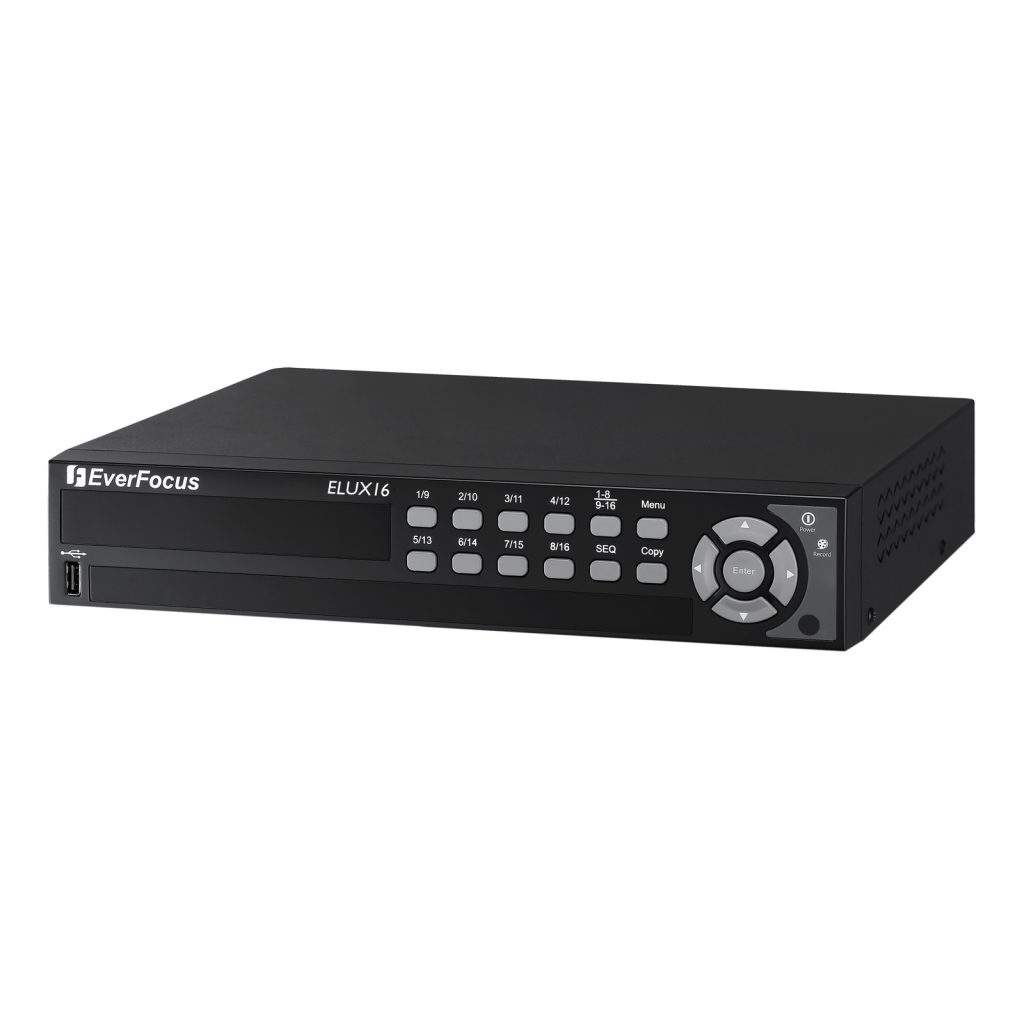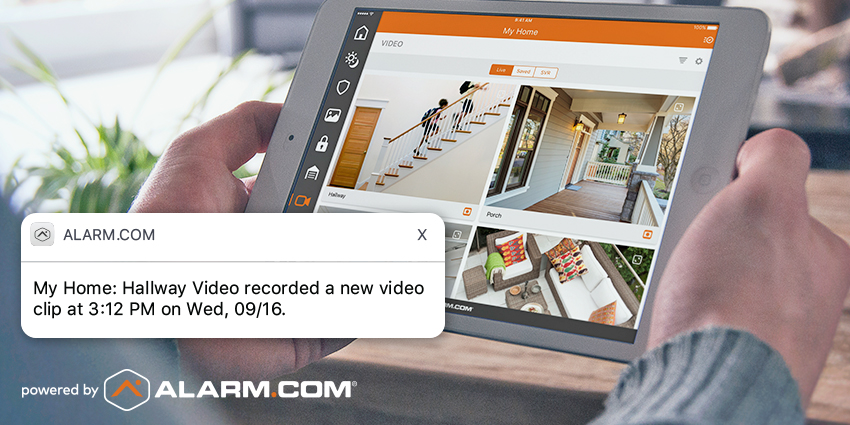As you may know if you’ve read our blog before, we’ve long touted the benefits of installing surveillance as one of your security measures. In fact, we recommend taking this imortant step to both residential and commercial customers alike. Folliwing this advice adds a couple important layers of security. For starters, cameras create an important crime deterrent. Potential thieves faced with a visible surveillance presence will often find another target for their crimes. Additionally, cameras also create stored footage for later viewing. This post focuses on your video surveillance recording options to create just this type of security. We’ll look at several storage options while describing the benefits of each.
First, we’ll take a look at a couple hardwired options for storing surveillance footage. Specifically, we’ll discuss a couple of different types of recording devices, as well as options for creating additional video storage to existing recorders. From there, we’ll examine how we create cloud-based storage for your video. These options include storage for smart cameras and traditional hardwired cameras alike. Now, let’s get started with a look at our hardwired video surveillance recording options!
Hardwired Surveillance System Recorders
Most of our camera installations involve running wiring from a physical recorder to each camera location. In this section, we’ll discuss the function and differentiation between the two most common types of surveillacne recorders. Furthermore, we’ll also look at how we can create additional video storage capacity even after installing your entire surveillance system. With that said, let’s begin with a look at our analog and network-based video recorders!

Digital Video Recorders, such as this model by Everfocus, store footage for any analog hardwired surveillance systems we install.
Recorder for Analog and Network-Enabled Camera Technology
When installing hardwired camera systems, we generally choose between a couple different types of technology. Traditionally, we would install analog cameras. These cameras require running two separate types of wire to each camera. One of these wires powers the camera, and the other one transmits the video feed. However, we often run thick “siamese” wiring that contains both types of wire in one convenient sheath. Then, we connect these cameras to a dedicated power supply and recorder. Generally, this recorder is called a Digital Video Recorder, or “DVR.”
On the other hand, newer Internet Protocol (or “IP”) cameras require a slightly different installation. For starters, we run network cable when installing IP cameras that both transmit video and power the cameras with one wire. We wire IP cameras directly to a Network Video Recorder, or “NVR.” Unlike their analog counterparts, IP cameras do not need a power source separate from the recorder itself. Both DVR’s and NVR’s house servers that store quite a bit of video on them. In the next section, we’ll take a look at exactly how we can ensure you have as much stored video footage as you require!
Boosting Your Storage Capacity
As we mentioned above, our recorders contain servers that store surveillance footage. The larger the server’s capacity, the more recorded video it will store. We measure the storage space for these recorders in terabytes. Those familiar with computer or smartphone storage usually see storage space measured in megabytes, often designated as “MB,” or gigabytes, shortened to “GB.” One terabyte equals one thousand gigabytes, or one million megabytes.
So what does this mean in terms of video storage? In simple terms, the more video you wish to maintain, the more terabytes your recorder should hold. However, we still face certain variables. For example, cameras with very high resolution create footage that takes up more space than their lower-resolution counterparts. Additionally, storage space gets used up more quickly as we connect more and more cameras to a recorder.
Fortunately, camera manufacturers can calculate exactly how much video a recorder stores before sending it out. In fact, customers often tell us exactly how many weeks’ worth of storage they desire. From there, we give our camera providers that information, along with the number of cameras we are installing and the video quality of the cameras. Using this information, surevillacne companies can provide a recorder that does exactly what you need it to do! As a final option, customers can also buy secondary hard drives to attach to their recorders. These hard drives boost the capacity of the existing recorder and easily add storage space. Next, let’s look at a couple of non-physical video storage options for our camera customers.
Cloud-Based Video Storage
The majority of our customers store their video on-site using one of the recorder options described above. However, we do have a couple exceptions to this rule. In this post, we share the methods that we use to create cloud-based storage for our surveillance customers who require it. Additionally, we’ll look at why we set this type of storage up for some of our customers. First, we’ll take a look at smart camera video storage in the cloud. Then, we’ll see how some of our customers store video both on their recorders and in the cloud! Now, let’s dive in with a focus on our smart camera-based video storage.
Storing Smart Camera Video Footage
As we’ve pointed out, we usually run wiring from a network or digital video recorder to every camera location when installing a surveillance system. However, we do have a less expensive, slightly more versatile option available for certain applications that does not require the presence of any recorder at all. Smart camera products, such as our own powered by Alarm.com, do not require us to run wiring from cameras back to a recorder. Instead, these cameras use a property’s existing wifi connection to communicate directly to surveillance customers. Furthermore, this connection also allows cameras to communicate to the cloud to store motion-activated video clips.

Alarm.com smart cameras record motion-based video clips straight to the cloud without the need for a network or digital video recorder.
This setup accomplishes a couple important goals. For starters, it creates a much quicker, and therefore less expensive, camera installation. This allows customers on a budget to experience some of the security offered by our surveillance systems. Unlike their hardwired coutnerparts, these cameras only record footage upon sensing motion. Therefore, an event might fail to get recorded if it happens at the edge of a camera’s field of vision. Occasionally, this type of event fails to register with the camera and, therefore, it goes unrecorded. However, having smart cameras still certainly beats having no security at all.
Moreover, the advent of smart cameras has allowed us to install cameras in applications where wiring every camera back to the same point may prove impossible. Certain homes and businesses simply do not have the attic or open basement space required for running wire. In these instances, installing smart cameras allows customers in these properties the opportunity experience the security of video surveillance. Our smart camera customers make up the majority of our cloud-based recording subscribers. Next, let’s look at a less popular, but incredibly useful, video storage method involving storing video both on site and in the cloud.
Subscription-Based Storage for Traditional Camera Systems
Even when installing a surveillance system utilizing a physical video recording device, customers still have the option to store video in the cloud as well. This option provides a backup for stored footage for customers worried about someone stealing their recorder. After all, without the use of could backup, losing your recorder also means losing any stored footage. Therefore, a select few of our customers susbcribe to a monthly subscription-based cloud strorage service. The cost of these services often proves somewhat prohibitive. However, customers who may require this service for either insurance-related purposes or due to specific security threats are still more than happy to foot the bill and receive this additional security.
Choosing the Video Surveillance Recording Options that Work for You
We hope that this post helps you understand your various video surveillance recording options! Moreover, we encourage you to contact us with any questions raised by this post. We will happily answer any surveillance-related questions you may have. Additionally, we encourage you to take advantage of our free site survey program. We offer free consultations to both residential and commercial customers, regardless of if they already use any of our products or not. We’ve helped hundreds of customers design camera systems that create the security they desire. Of course, this includes creating a plan to store as much video as they may need. We’d be happy to do the same for you. Together, we can design a complete surveillance system to keep your property, and everyone on it, as safe and secure as possible!
